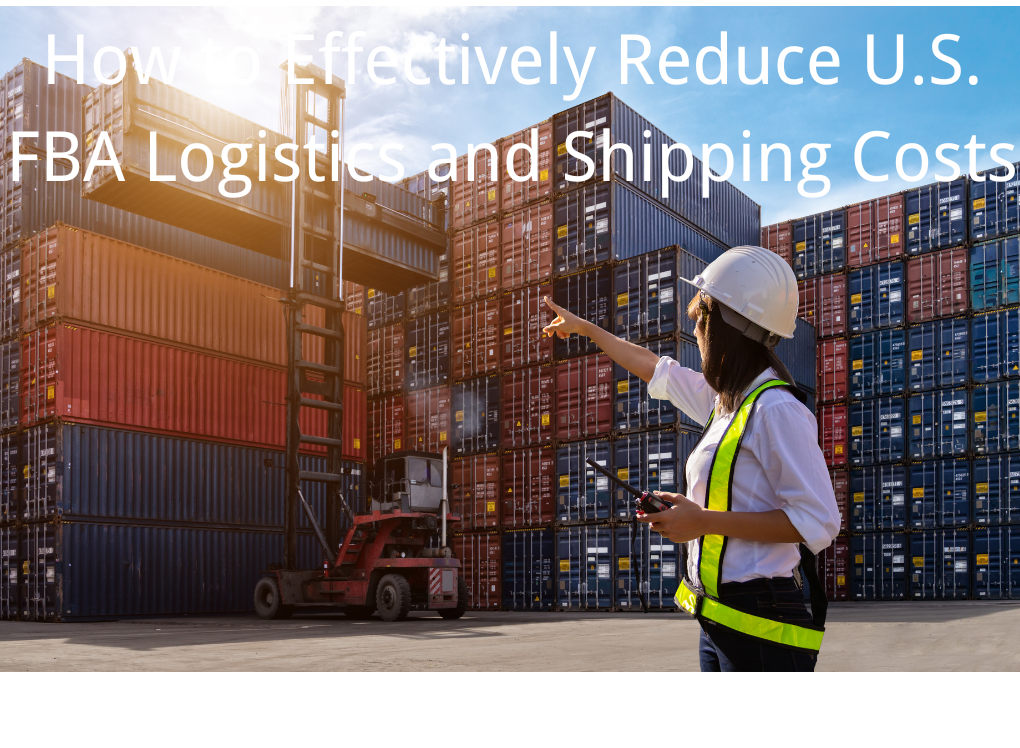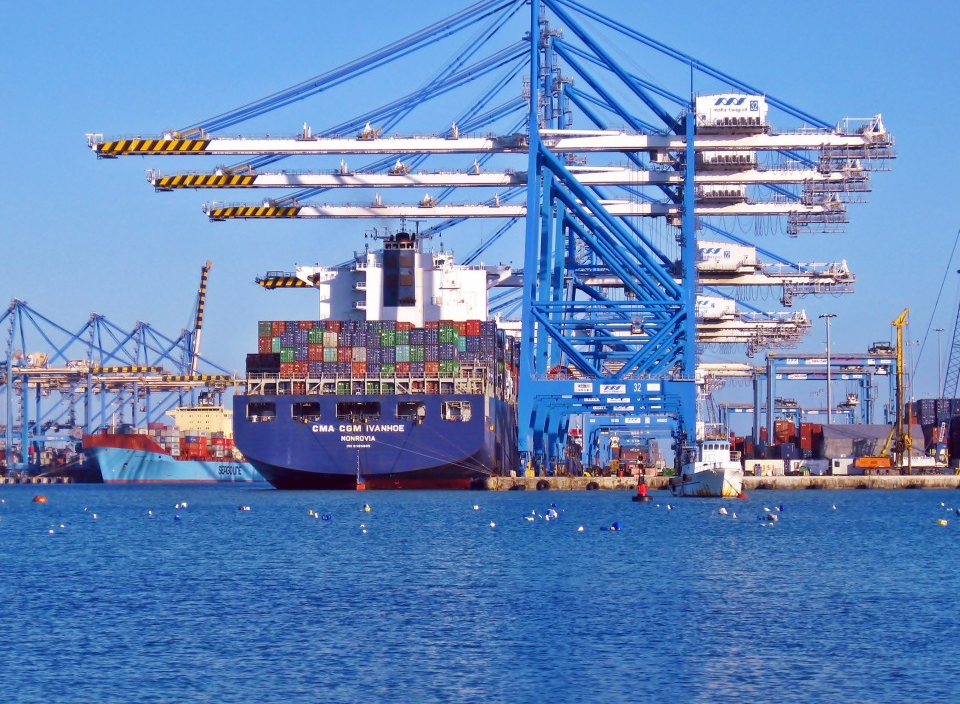Managing logistics and shipping expenses is crucial for cross-border e-commerce sellers aiming to enhance profitability. By implementing strategic approaches, you can significantly reduce U.S. Fulfillment by Amazon (FBA) costs.Optimize Inventory ManagementEfficient inventory turnover is critical for minimizing expensive FBA storage fees. Regularly analyze sales velocity data to forecast demand more accurately. This prevents overstocking items that sit too long in Amazon’s warehouses, incurring additional storage fees. Utilize inventory management tools to set optimal reorder points and establish safety stock levels, ensuring a balance between supply and demand. Reduce Product Dimensional WeightCarriers and Amazon FBA charge based on the higher of actual weight or dimensional weight. To minimize costs:Optimize Packaging Size: Use compact packaging that provides adequate protection without excess space.Minimize Packaging Material: Choose lightweight yet durable materials to reduce overall package weight.Package Flattening: For certain products, consider packaging them in a flattened state to reduce dimensions.Understanding carrier dimensional weight pricing rules helps in optimizing packaging for cost efficiency. Leverage Amazon’s Partnered Carrier ProgramAmazon offers discounted shipping rates through its Partnered Carrier Program. By utilizing this service, you might find better rates than booking directly with carriers like UPS. This can lead to significant savings on shipping costs. Ship to the Nearest Fulfillment CenterAmazon allows you to choose which fulfillment center to send your inventory to. Opting for the closest possible locations can significantly reduce transit costs and delivery times, enhancing customer satisfaction. Consolidate ShipmentsShipping products in bulk enables you to take advantage of carrier volume discounts. Consolidating shipments reduces the number of deliveries, leading to lower overall shipping expenses. Ensure that your shipments comply with Amazon’s FBA guidelines to avoid additional fees. Utilize Amazon’s Buy Shipping DiscountsAmazon introduced a Sponsored Discount option that allows you to purchase shipping labels through Buy Shipping at a discounted rate. The number of labels you purchase determines how large a discount you receive, so research the program as well as the rates of other carriers. Offer Free ShippingOffering fast and free shipping can have a significant impact on your business:Increase Conversions: Customers are more likely to complete a purchase when free shipping is offered.Boost Customer Satisfaction: Free shipping enhances the overall shopping experience.Raise Average Order Value: Customers may add more items to their cart to qualify for free shipping.Utilizing Amazon FBA allows you to offer free shipping without managing the logistics yourself. Regularly Review and Adjust PricingKeep an eye on your product pricing and adjust it to accommodate changes in Amazon’s fee structure. This can help maintain profitability even when fees change. Strategic pricing adjustments may temporarily reduce margins but can effectively move stagnant inventory. Partner with Experienced Freight ForwardersCollaborating with experienced freight forwarders can provide valuable insights into cost-saving opportunities. They can negotiate better rates with carriers due to their volume of business and offer tailored solutions to meet your specific shipping needs. Stay Informed and AdaptAmazon periodically updates its FBA policies and fee structures. Staying informed about these changes allows you to adapt your strategies accordingly, ensuring continued profitability. Regularly review Amazon’s Seller Central updates and participate in seller forums to exchange insights with other sellers. By implementing these strategies, you can effectively manage and reduce your U.S. FBA logistics and shipping costs, leading to improved profitability and a more sustainable e-commerce business.
2025-02-05
2
Sea Freight
Air Freight
Amazon FBA

Freight Shipping Across Borders: The Essential Document Checklist for International Logistics The world of international shipping is intricate and requires meticulous planning and management. One indispensable aspect of this complexity is the proper documentation needed to ensure smooth customs clearance, accurate transactions, and legal compliance. Below, we explore the key freight documents essential for international shipping, each playing a critical role in the logistics chain.Commercial InvoiceThe commercial invoice is a fundamental document in international trade, serving as a customs declaration provided by the shipper or exporter. It details essential information such as a description of the goods, their value, the country of origin, and the harmonized system codes. Customs authorities rely on this document to assess duties and taxes. Importantly, it also functions as a contract of sale between the seller and buyer.Bill of Lading (BOL)Regarded as the "heart and soul" of international shipping, the Bill of Lading is a legal document issued by a carrier to a shipper. It serves multiple purposes: it acts as a receipt for the cargo, a document of title, and a contract of carriage that outlines the terms and conditions of transport. The BOL contains valuable information about the type and quantity of goods, the shipper, the consignee, and the destination.Air WaybillFor air freight, the Air Waybill functions similarly to the Bill of Lading, providing proof of receipt of goods and a contract of transport. It includes vital details such as the shipper's and receiver's information, the shipment's contents, weight, dimensions, and value. This document aids in customs clearance and must always accompany the shipment.Certificate of OriginThe Certificate of Origin is crucial in verifying the country where the goods were manufactured. This document can affect the duties and tariffs applied to the goods, especially if the originating country has favorable trade agreements with the destination country. There are two main types: preferential and non-preferential certificates of origin, which indicate eligibility for reduced taxes under free trade agreements or regular tariffs respectively.Packing ListAn Export Packing List itemizes all the goods in a shipment, providing details such as weight, dimensions, and description of each item. This document assists customs officials during inspections and freight forwarders in verifying that all items are correctly packaged and shipped. Consistency between the packing list, commercial invoice, and airway bill is crucial for avoiding delays.Insurance CertificateGiven the risks associated with international shipping, an insurance certificate provides proof that the shipment is covered against potential loss or damage during transit. This document is critical for protecting the financial interests of all parties involved in the shipping process.Export and Import LicensesCertain goods require special licenses to be exported or imported, which help regulate the movement across borders for items that could impact safety, health, or economic stability. These licenses are issued by government authorities and must be obtained when dealing with restricted goods.Export DeclarationThe Export Declaration is a government document required for tracking and controlling the export of goods. It provides precise details about the shipment and helps in governmental reporting and compliance with export control regulations [citation:9]. Failure to complete this document accurately can result in significant delays and penalties.Proforma InvoiceA Proforma Invoice is a preliminary bill of sale sent to buyers in advance of a shipment or delivery of goods. It outlines the terms of the sale agreement and serves as a quote in negotiations before the issuance of the final commercial invoice.Letter of CreditThis document is often used in international trade to guarantee payment from the buyer to the seller, issued by the buyer’s bank. It assures the seller that they will receive payment as long as the terms of the letter of credit are met, thus providing security in high-value transactions.Critical Freight Documents for Ocean, Sea, and Air ShippingDifferent documents are required for ocean, air, and sea freight due to the varying regulations and logistics involved in each mode of transportation:1. Ocean Freight: - Bill of Lading (BOL): Legal document between the shipper and the carrier detailing the type, quantity, and destination of the goods shipped. - Seaway Bill: Used when no original documents are required to release cargo at the destination. - Manifest: Lists all cargo on board, required by customs for control, inspection, and duty calculation.2. Air Freight: - Air Waybill (AWB): Non-negotiable transport document which covers transport of cargo from airport to airport. - Manifest: Details all shipments loaded on the airplane. - Shipper’s Export Declaration (SED): Used for statistics and control of goods departing the country.While some documents like commercial invoices and packing lists are common across all types of freight, specific documents like the BOL for ocean and the AWB for air are tailored to the particular requirements of each mode of transportation.Freight shipping documents are essential for several reasons:1. Legal Compliance: They ensure all international shipping regulations and laws are followed, avoiding legal issues.2. Customs Clearance: Documents like the commercial invoice and certificate of origin help customs authorities assess duties and taxes and determine whether goods can enter the country.3. Tracking and Verification: They provide detailed information about the shipment’s contents and status, which is crucial for tracking and managing the shipment throughout its journey.4. Proof of Ownership and Contract: They act as a proof of the contract between the shipper and the carrier, detailing the terms and responsibilities of each party.These documents facilitate smooth and efficient freight operations, helping to prevent delays and disputes over shipments.ConclusionInternational shipping documentation is intricate but essential in ensuring that goods move smoothly and legally from origin to the destination. Each document—from the Commercial Invoice to the Bill of Lading, Air Waybill, and more—plays a pivotal, interconnected role in customs clearance, legal compliance, and risk management. Properly managing these documents ensures a streamlined, efficient international shipping process. By maintaining comprehensive, accurate, and compliant documentation, businesses can mitigate risks, expedite customs processes, and foster smooth international trade operations.Choose Auto Shipping as your Freight Forwarder.
2024-06-18
26
Sea Freight
Air Freight




